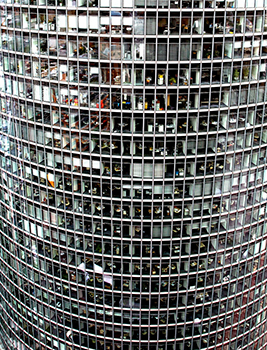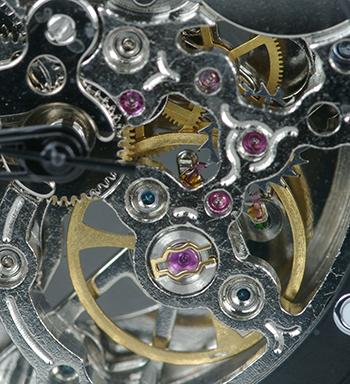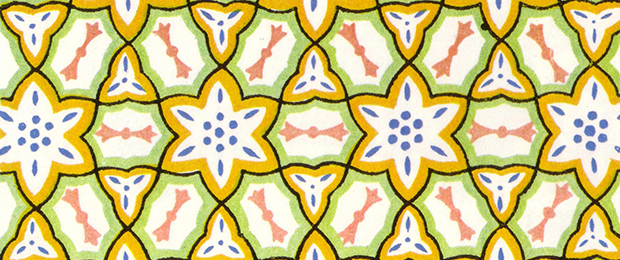
Design Startup Showcase: Call for proposals
Get your new design product or prototype in front of industry movers and shakers at the O’Reilly Design Conference.
The O’Reilly Design Conference is just a few short months away, and we’re thrilled to announce that we’ll be hosting a Startup Showcase.
We’re seeking design startups that want to pitch judges and attendees — a broad selection of venture capitalists, leaders, and innovators from the investment and design communities. Successful applicants will receive free space in the exhibit hall at the Design Conference. Onsite, a panel of judges will vote for the best in show — winners will be announced on the keynote stage and will be featured in a post on oreilly.com.
Startup requirements include:
- Must be early stage, under three years.
- Your product should not yet be launched but within view of shipping an early version, or you may bring a fairly polished prototype (you can’t show up with a laptop displaying a 3D rendering).
- Your startup must be pre-Series A.
- Your product must be scalable, repeatable — i.e., not a consultancy.

Airbnb’s design approach
The O’Reilly Design Podcast: Katie Dill on designing for seven billion people, hiring good people, and the triforce.
Subscribe to the O’Reilly Design Podcast, our podcast exploring how experience design — and experience designers — are shaping business, the Internet of Things, and other domains.
In this week’s Design Podcast episode, I chat it up with Katie Dill, head of experience design at Airbnb. Dill talks about Airbnb’s values; the relationship between design, engineering, and product management; and what Airbnb looks for when hiring. Dill also will be keynoting at O’Reilly’s inaugural Design Conference.
Here are a few highlights from our conversation:
We have a few different ways of looking at the values that are behind our work and the way we do our work, and the team behind it. For a starting point, our company has core values. There are six points, which are actually on our website, that drive the values of all the people that work here. Some of which are things like championing the mission or embracing the adventure and having an entrepreneurial spirit.
Pretty much behind all the design work — and the thinking and processes of the people that work here — are three values we hold dear: being a host, simplifying, and every frame matters. Those three become really powerful in our design decisions and we translate that to our work. So, in being a host, we think about how we use the digital platforms that we design for to help people along in their journey, to invite them into an experience or a new part of the world. … Even our content choices, the language that we use, we try to make it really comforting, accessible, very human, just like a host would. That same thing goes with simplify. We want to be clear and to the point, and so we reduce the noise. Every frame matters references the frames of a storyboard, so every frame meaning that every point in the journey matters. … It’s not just about one screen that someone looks at or it’s not just about the app; it’s not just about one moment in time.

O’Reilly Design Conference Learning Paths
Our program will emphasize the full stack of skills designers need to work smarter.
Register now for the O’Reilly Design Conference, which will be held January 19-22, 2015, in San Francisco.
When reviewing the schedule for the O’Reilly Design Conference, you may wonder what shoe shopping with elders and the fisheries business have to do with design. Design’s impact is felt in every corner of our lives. And as a result, if you’re a designer you need to know more about more.
Remaining true to our roots, the O’Reilly Design Conference is all about learning new skills and bringing together different voices. We’ve planned several days of training for designers who want to increase their skill sets and widen their perspectives, including sessions on voice, industrial design, design thinking, prototyping, and running design reviews together with sessions like creative coding, and discussions on data, ethics, and privacy. Our program emphasizes the full stack of skills designers need to work smarter.
The keynotes we’ve lined up for Thursday and Friday morning will provide new perspectives, and a sense of how design is impacting business and society. You’ll hear designers talk about their experiences in the VC world and what it’s like when the experiences you craft live in both the physical and the digital worlds. After lunch on Thursday and Friday, the program gets broad. Whether you come for the conference, workshops, or intensive training days — or all three — I’ve laid out a few themes that can help to shape the sessions you choose to attend.
Here are some possible learning paths:
- I want to learn how to design for the digital and physical world
- I want to learn how to manage, lead, and have a larger impact within my organization
- I want to learn how to learn how to work effectively in cross discipline teams.
- I want to learn how to be better at user research and using data to create better products
- I want to learn how to apply my design skills to societal issues

This is why so many people have an opinion about design
With more companies focusing on design as a competitive advantage, it seems as if everyone is suddenly a designer.
Register now for OSCON EU, October 26 to 28, 2015, in Amsterdam, The Netherlands, where Tom Greever will present the session “Articulating design decisions.”
 The more that I talk to people about what it means to explain design, the more I realize that everyone across all types of organizations — from product companies to nonprofits to universities to health care — is intensely interested in it. Everyone now has an opinion about design, and we’ve all been in the position of having to defend our choices or suggestions.
The more that I talk to people about what it means to explain design, the more I realize that everyone across all types of organizations — from product companies to nonprofits to universities to health care — is intensely interested in it. Everyone now has an opinion about design, and we’ve all been in the position of having to defend our choices or suggestions.
Developers, product owners, project managers, and even CEOs are intimately involved in design processes now — increasingly, it seems as if everyone is a designer. But it hasn’t always been this way — so, why now do so many people have an opinion about design?
In the past decade, design and UX has gone “mainstream.” The most popular and interesting companies have put design at the forefront of their product offerings, creating a buzz culture that drools over every new release and a fan following that promotes their brand for them. I’m not only thinking of Apple, but also brands such as IKEA, innovators like Tesla, and unique problem-solving designs from Dyson, Segway, or Nest. These brands command respect, elicit strong opinions, and foster loyalty from the people who follow them. This elevation of design conversations within today’s companies , organizations, and throughout the public in general exemplifies a democratization of design that we haven’t before experienced.
Here, I’ll explore several factors contributing to design’s growing ubiquity.
Social media has changed how people view digital products
It’s not only physical products that have transformed our understanding of the value of design. Social media platforms have shown that UX is a critical component to success. Millions of people use Facebook every single day. Each minor tweak to the UI or change to the design incurs the praise or wrath of every user. Why? Because Facebook (and other services like it) is a very personal part of our lives. Never before have we had a platform for sharing the most intimate and mundane details of our everyday experiences. Read more…

Understanding the rules of critique
Four rules to ensure critiques remain focused, efficient, and effective.
This excerpt was co-authored by Aaron Irizarry.
Register now for the O’Reilly Design Conference, which will be held January 19-22, 2016, in San Francisco. Adam Connor and Aaron Irizarry will present the session, “Discuss design without losing your mind.” Editor’s note: this is an excerpt from our recent book “Discussing Design,” by Adam Connor and Aaron Irizarry.
 There are four key rules of critique that we need to keep in mind. Paying attention to these rules will help to ensure that our discussion remains focused, efficient, and effective. It’s the facilitator’s job to make certain these rules are adhered to, but it’s a good idea to share them with the team.
There are four key rules of critique that we need to keep in mind. Paying attention to these rules will help to ensure that our discussion remains focused, efficient, and effective. It’s the facilitator’s job to make certain these rules are adhered to, but it’s a good idea to share them with the team.
Especially in formal critiques, we want to confirm that all participants know about and understand these rules. Don’t hesitate to review them quickly at the beginning of the discussion or post them in the room where the critique is being conducted.
Everyone is equal
Organizational hierarchy has an uncanny ability to make people feel like their perspectives and opinions carry more or less weight than others. Although it’s true that an organization might make decisions based on what its leaders think as opposed to other employees, it isn’t inherently true that their opinions are more accurate just because they’re executives.
It is important in a critique that we remember this and that everyone’s observations and perspectives are listened to equally. More attention should not be paid to those of a higher position just because of that position. You may be familiar with the acronym HiPPO (Highest Paid Person’s Opinion); it’s a killer when it comes to effective critique. Read more…

Data, design, and intuition
The O’Reilly Design Podcast: Pamela Pavliscak on designing for happiness.
Subscribe to the O’Reilly Design Podcast, our podcast exploring how experience design — and experience designers — are shaping business, the Internet of Things, and other domains.
In this week’s Design Podcast episode, I sit down with design researcher and data scientist Pamela Pavliscak. Pavliscak is the author of Data-Informed Product Design, a free report from O’Reilly, and will be speaking at OReilly’s inaugural design conference.
Pavliscak talks about the delicate relationship between data and design, and why it’s not an either or proposition, as well as why designing for happiness is good for business.
Here are a few highlights from our conversation:
We like to think in dichotomies for when it’s either data or intuition. I think of it more like archaeology. Archaeology is not always about finding the big celebrities or what the important heroes and personalities of history do. It’s about learning more about the everyday practices of people. You have these clues, these traces left behind. Like archaeology, the science gets more sophisticated. Archaeologists have remote sensing and X-ray guns. Data scientists have algorithms and AI. The big difference is, these people that we’re learning about with data science are still around. We can learn about them in their own words and rely on them to share their feelings and their context. For me, it’s not really an either-or, but more of kind of an improv ‘yes-and’ kind of relationship.
I always suspected that delight, that concept that we have in design, wasn’t the full story of what made people happy. The small moments, the small pleasures certainly factored in, but it really seemed that the patterns fell into this kind of deeper meaning. I would see people for Humans of New York — this is the happiest site in the world for people. Not in the sense that it’s showing happy things, but because it makes people feel connected. It’s connected to a story, and it’s connected to a story that’s not complete. There’s still room for people. Those are the kind of moments that came out.
You’ll find that happier employees are more productive and they find more meaning in their work at the same time. Even way back to the 80s, I found some research on product detachment, and found that happiness and brand detachment are somehow linked together. There’s Martin Seligman’s PERMA, there’s subjective well-being scale, there’s Maslow’s hierarchy, which of course we all know by heart. Countries are applying happiness initiatives to supplement their GDP. We’re learning more about this through behavioral economics and these different models.



